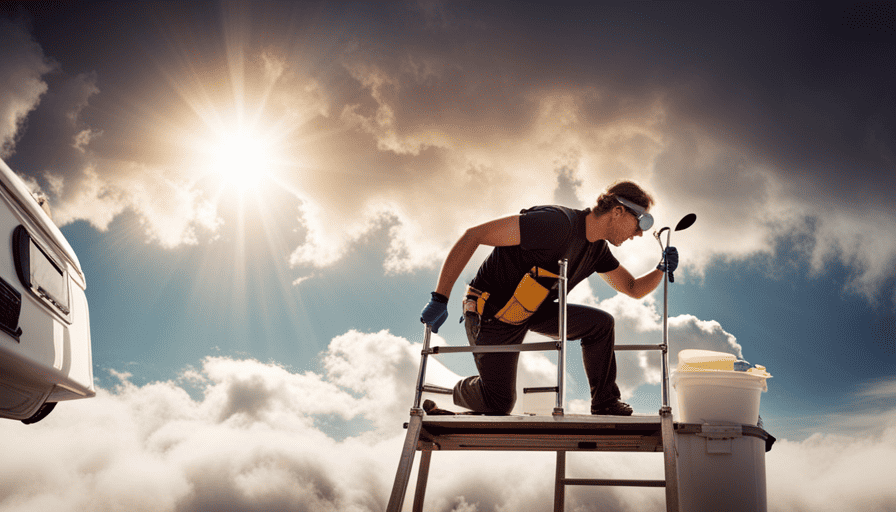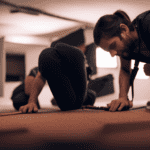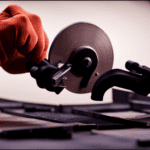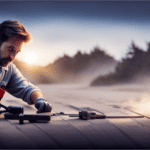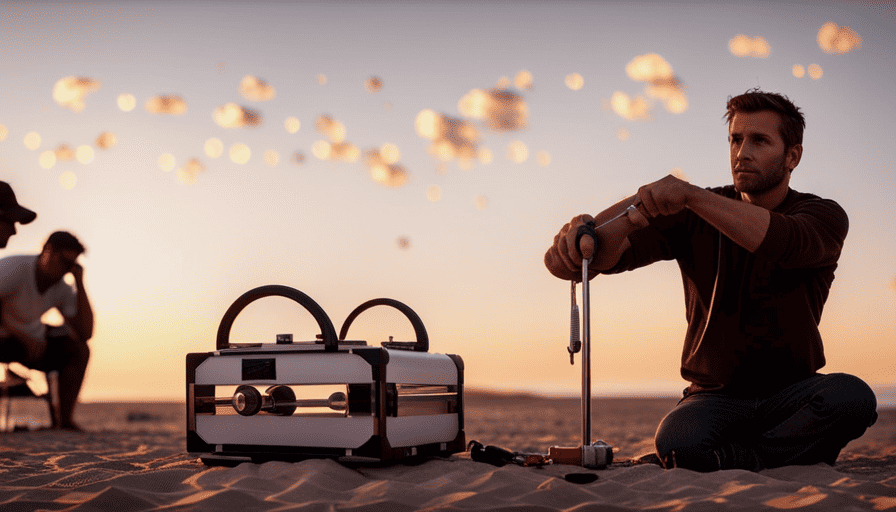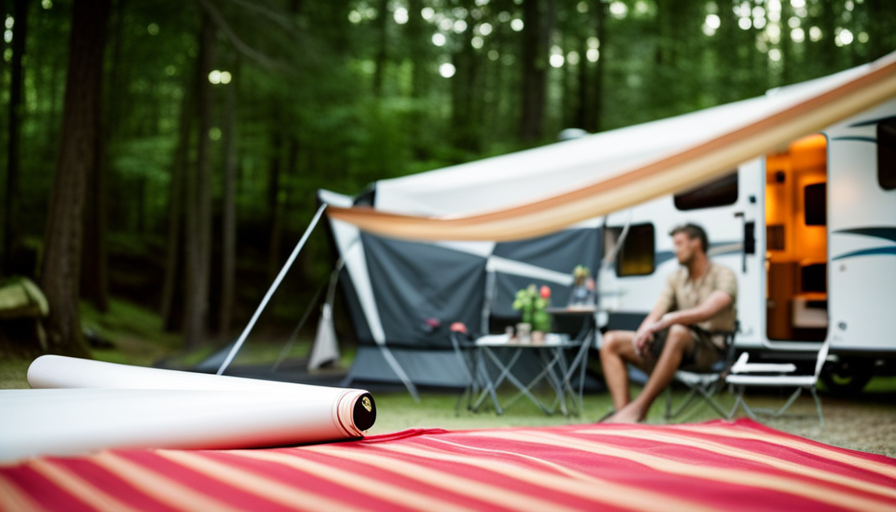The adage, ‘A strong foundation leads to a sturdy structure,’ is applicable in all walks of life, floors of our cherished campers included. Whether you are an experienced traveler or new to the world of camping, understanding how to repair the floor of your camper is crucial.
A damaged floor can dampen the joy of your outdoor adventures and compromise the overall integrity of your vehicle. In this article, I will guide you through a step-by-step process to assess, repair, and maintain your camper floor.
We’ll start by assessing the damage and identifying problem areas. Then, we’ll gather the necessary tools and materials to get the job done. From there, we’ll remove the old flooring, repair or replace the subfloor if needed, and measure and cut new flooring to fit. We’ll seal and finish the edges for a polished look and test the stability and durability of the repaired floor.
Lastly, we’ll discuss adding a protective layer to prevent future damage and the importance of regular maintenance and inspections. So let’s get started and ensure a solid foundation for your camping adventures!
Key Takeaways
- Assess the extent of the damage and identify problem areas before starting the repair process.
- Choose the appropriate flooring material that is durable and water-resistant.
- Properly install and secure the new flooring according to manufacturer’s instructions.
- Seal and finish the edges of the floor to prevent moisture penetration and damage.
Assess the Damage and Identify Problem Areas
Take a close look at the camper floor to assess the damage and identify problem areas. Start by examining the entire floor surface, paying attention to any signs of water damage, soft spots, or discoloration. Use a flashlight to inspect hard-to-reach areas, such as underneath furniture or cabinets.
Once you’ve assessed the damage, gather the necessary tools and materials for the repair job.
To begin fixing the camper floor, you’ll need to remove the old flooring. Use a pry bar or a utility knife to carefully remove any carpet, vinyl, or laminate flooring. Next, thoroughly clean the area to remove any dirt, dust, or debris. This will ensure a smooth and even surface for the new flooring.
After cleaning the area, inspect the subfloor for any rot or damage. If necessary, repair or replace the subfloor before proceeding. Measure and cut the new flooring material, making sure to leave a small gap around the edges for expansion.
Install and secure the new flooring according to the manufacturer’s instructions. Once the flooring is in place, seal and finish the edges to prevent moisture penetration. Test the stability and durability of the new floor by walking on it and applying pressure.
To add an extra layer of protection, consider applying a waterproof sealant or a protective coating to the floor. Finally, regularly maintain and inspect your camper floor to ensure its longevity and prevent future damage.
Now, let’s move on to gathering the necessary tools and materials for this repair job.
Gather the Necessary Tools and Materials
To start the project, you’ll need to gather all the essential tools and materials. These include a hammer, nails, a measuring tape, and plywood. These tools will be crucial for fixing the camper floor effectively.
If you’re repairing a camper floor that has been damaged by water, it’s important to have a moisture meter. This tool will help you accurately assess the extent of the water damage and determine the necessary repairs.
When choosing the right flooring material for your camper, consider durability and water resistance. Opt for materials like vinyl or laminate that are easy to clean and maintain. These materials also offer good resistance against water damage, which is essential for a camper floor that may be exposed to moisture regularly.
To prevent water damage in the future, there are a few tips to keep in mind. Ensure proper sealing around windows and doors to prevent water from seeping in. Regularly inspect the roof for any cracks or leaks and promptly fix them. Additionally, maintain proper ventilation in the camper to prevent condensation and moisture buildup.
With all the necessary tools and materials gathered, you can now move on to the next step of the process: removing the old flooring and cleaning the area.
Remove Old Flooring and Clean the Area
Now that I’ve gathered all the necessary tools and materials, it’s time to strip away the old flooring and give the area a thorough cleaning.
Before starting, make sure you have the appropriate cleaning tools on hand, such as a broom, dustpan, vacuum cleaner, mop, and cleaning solution.
First, remove any furniture or fixtures from the area to create a clear workspace. Use a pry bar or a crowbar to carefully lift the edges of the old flooring and remove it from the camper. Depending on the type of flooring you had, you may need to use a knife or scraper to loosen any adhesive or glue. Be cautious not to damage the subfloor while removing the old flooring.
Once the old flooring is completely removed, it’s time to clean the area. Sweep or vacuum the subfloor to remove any dust, dirt, or debris. Then, use a mop or damp cloth with a suitable cleaning solution to thoroughly clean the subfloor. This will ensure a clean surface for installing the new flooring.
Now that the area is clean and free of old flooring, you can move on to the next step of repairing or replacing the subfloor if needed.
Repair or Replace Subfloor if Needed
If the subfloor is damaged or rotten, you’ll need to assess the extent of the issue and determine whether repairs or replacement are necessary. Start by inspecting the subfloor for any signs of water damage, such as soft spots or discoloration. If you notice any areas that are significantly weakened or deteriorated, it’s best to replace the entire subfloor to ensure a sturdy foundation for your new camper flooring.
To repair a small section of the subfloor, you can use a circular saw to carefully cut out the damaged area and replace it with a new piece of plywood. Make sure to measure the exact dimensions of the damaged section before cutting the replacement piece. Use screws to secure the new subfloor to the existing framework, making sure it is level and secure.
If a larger area of the subfloor needs to be replaced, it may be more practical to remove the entire subfloor and install a new one. This will involve removing the flooring and any insulation or covering materials, then cutting and fitting new plywood to match the dimensions of your camper. Secure the new subfloor in place, making sure it is level and properly supported.
Once the subfloor repairs or replacement are complete, you can move on to the next step of measuring and cutting new flooring to fit.
Measure and Cut New Flooring to Fit
Once you’ve finished assessing and repairing the subfloor, it’s time to dive into the exciting part – measuring and cutting your brand new flooring to perfectly fit your space. Before you begin, gather all the necessary cutting tools, such as a measuring tape, pencil, and a circular saw or jigsaw. These tools will ensure precise cuts and a professional-looking finish.
Start by measuring the dimensions of your camper floor, taking into account any nooks, corners, or obstacles that may require special attention. Remember to double-check your measurements to avoid any mistakes.
Next, choose the type of flooring that best suits your needs and preferences. There are various flooring options available, including vinyl, laminate, or hardwood, each with its own advantages and disadvantages.
Once you have your measurements and flooring material ready, it’s time to start cutting. Using the appropriate cutting tool, carefully follow your measurements and mark the flooring accordingly. Take your time to ensure accurate cuts, as any mistakes can result in ill-fitting pieces. Remember to wear safety goggles and gloves to protect yourself during the cutting process.
Now that you have successfully measured and cut your new flooring, you’re ready to move on to the next step: installing it and securing it properly. This will ensure a durable and long-lasting camper floor.
Install New Flooring and Secure it Properly
Get ready to transform your space with your brand new flooring – it’s time to install and secure it properly for a stunning and long-lasting result!
When installing laminate flooring in your camper, it’s crucial to choose the right flooring material that’s durable, moisture-resistant, and easy to clean. Once you’ve selected the perfect flooring, follow these steps to ensure a successful installation:
-
Start by clearing the area of any furniture or obstacles to provide a clean and open workspace.
-
Lay down an underlayment to help absorb sound and provide stability for the flooring.
-
Begin installing the laminate flooring by placing the first plank in the corner of the camper and continue laying the planks row by row, ensuring a snug fit.
-
Use a tapping block and mallet to secure the planks together, creating a seamless and sturdy flooring surface.
-
Trim the last row of planks to fit using a circular saw or a jigsaw for precision.
-
Finally, secure the flooring by attaching it to the subfloor using adhesive or nails, depending on the type of flooring material.
With your new flooring installed, it’s time to move on to the next step and seal and finish the edges for a polished look.
Seal and Finish the Edges for a Polished Look
After installing new flooring in your camper and securing it properly, the next step is to seal and finish the edges for a polished look. This is an important step to prevent moisture from seeping into the floor and causing damage. Moisture can lead to mold and rot, which can be costly to repair.
To prevent this, it’s crucial to choose the right sealant for your camper floor. When choosing a sealant, consider the type of flooring you’ve installed and the level of moisture resistance it provides. Look for a sealant that’s specifically designed for camper floors and is waterproof. Silicone-based sealants are a popular choice as they provide a durable and flexible barrier against moisture.
To apply the sealant, start by cleaning the edges of the flooring thoroughly to remove any dust or debris. Using a caulk gun, carefully apply the sealant along the edges, ensuring complete coverage. Smooth out the sealant with a putty knife or your finger for a neat finish.
Once the sealant has dried, you can proceed to the next step of testing the stability and durability of the repaired floor. This will ensure that your camper floor is ready to withstand the rigors of your adventures without any issues.
Test the Stability and Durability of the Repaired Floor
To ensure that your newly repaired flooring can withstand the demands of your adventures, it’s essential to test its stability and durability. Testing methods can vary depending on the type of camper floor you have.
One common method is to walk on the repaired areas, applying pressure to see if they hold up. You can also jump or stomp on the floor to simulate the impact of heavy objects.
Another way to test stability is by placing furniture or equipment on the repaired section and seeing if it remains level and secure.
Additionally, it’s crucial to consider professional assistance when testing the repaired floor. A flooring expert can provide valuable insights and use specialized tools to assess the stability and durability accurately. They can also recommend additional steps or improvements if necessary.
Once you are satisfied with the stability and durability of your repaired camper floor, it’s time to add a protective layer to prevent future damage. This layer can be in the form of a sealant or a finish, which will provide an extra barrier against moisture, spills, and general wear and tear.
By following these steps and taking the time to test your repaired floor, you can ensure a long-lasting and secure flooring solution for your camper.
Add a Protective Layer to Prevent Future Damage
Make sure you apply a protective layer to safeguard your repaired flooring from any potential harm in the future. Here are three important steps to consider when adding a protective layer to prevent future damage:
-
Choose the right protective layer: There are various options available, such as polyurethane, epoxy, or a sealant specifically designed for camper floors. Consider factors like durability, ease of application, and resistance to moisture and wear. Research different products and select the one that best suits your needs.
-
Thoroughly clean and prepare the floor: Before applying the protective layer, make sure the repaired floor is clean and free from any debris. Use a vacuum cleaner or a broom to remove dust, and wipe the surface with a mild cleanser. Allow the floor to dry completely before proceeding.
-
Apply the protective layer evenly: Follow the manufacturer’s instructions for applying the chosen protective layer. Use a brush or roller to evenly coat the entire floor surface. Make sure to cover all repaired areas and edges. Allow the protective layer to dry according to the recommended time frame.
By taking these steps to prevent future damage and choosing the right protective layer, you can extend the lifespan of your camper floor. Maintaining and regularly inspecting your camper floor for longevity is crucial.
Maintain and Regularly Inspect Your Camper Floor for Longevity
Keep your camper floor in top shape and ensure its longevity by regularly inspecting and maintaining it. Regular maintenance is crucial to prevent any potential damage and to catch any issues early on before they worsen. By following a few simple prevention tips, you can extend the life of your camper floor and avoid costly repairs.
To help you stay on top of your camper floor maintenance, here are some key areas to focus on during your inspections:
-
Flooring material: Check for any signs of wear, such as cracks, warping, or soft spots. Pay attention to areas that are frequently walked on or exposed to moisture.
-
Seams and joints: Inspect the seams and joints of your camper floor for any signs of separation or damage. These areas are prone to wear and tear, so it’s important to address any issues promptly.
-
Underneath the camper: Take a look underneath your camper to ensure there are no leaks or signs of water damage. Moisture can seep into the flooring and cause rot or mold if left unchecked.
By incorporating these regular inspections into your maintenance routine, you can catch any potential issues early and take the necessary steps to prevent further damage. This proactive approach will not only save you time and money but also ensure the longevity of your camper floor for years to come.
Frequently Asked Questions
What should I do if I notice mold or mildew underneath the camper floor?
If I notice mold or mildew underneath the camper floor, I would first address the issue of mold remediation. This involves wearing protective gear, such as gloves and a mask, and using appropriate cleaning products to remove the mold.
Afterward, I would take steps to prevent future mold growth by ensuring proper ventilation and reducing moisture levels in the camper. Regularly inspecting and cleaning the area can also help to prevent mold from reoccurring.
Can I use any type of flooring material for my camper floor replacement?
Yes, you can use various flooring materials for your camper floor replacement. There are several options to consider, each with their own pros and cons.
Vinyl flooring is a popular choice due to its durability and easy maintenance.
Laminate flooring offers a wide range of styles and is also relatively easy to clean.
Another option is hardwood, which adds a touch of elegance but requires more maintenance.
Ultimately, the choice depends on your personal preferences and budget.
How long does it typically take to complete a camper floor repair project?
When it comes to the timeline for camper floor repair projects, it can vary depending on factors like the extent of damage and the materials used. However, with efficient tips, you can streamline the process.
To start, assess the damage thoroughly and plan accordingly. Gather all necessary tools and materials beforehand to avoid delays. Additionally, having a clear plan and staying organized throughout the project can significantly reduce repair time.
Remember, "time is of the essence" when it comes to camper floor repairs.
Are there any specific safety precautions I should take while removing the old flooring?
When removing old flooring safely, there are a few precautions you should take.
First, wear protective gear such as gloves, safety glasses, and a dust mask to protect yourself from dust and debris.
Next, make sure to turn off any electrical connections and remove any furniture or obstacles in your work area.
Additionally, be cautious of any sharp edges or nails as you remove the old flooring.
Taking these safety measures will help ensure a smooth and accident-free process.
What are some signs that indicate the subfloor may need to be replaced rather than repaired?
Signs of water damage on the camper floor are a strong indicator that the subfloor may need to be replaced instead of repaired. Look for soft spots, discoloration, or warping in the flooring.
Additionally, if you notice a musty odor or mold growth, it’s likely that water has seeped into the subfloor. It’s crucial to have proper ventilation in your camper to prevent moisture buildup, as this can lead to extensive damage and the need for subfloor replacement.
Can I Use the Same Method to Fix a Cracked Linoleum Floor in My Camper?
Yes, you can use the same method to fix cracked camper flooring linoleum. Start by cleaning the area thoroughly and removing any debris. Apply adhesive specifically designed for linoleum floors, pressing the cracked edges together. Use a heavy object to apply pressure until the adhesive dries completely. Finally, seal the repaired area for a polished finish.
Conclusion
In conclusion, fixing a camper floor can be a challenging but rewarding task. By following the steps outlined in this article, you can successfully repair or replace your camper floor and ensure its longevity.
It’s interesting to note that, according to a study conducted by RVIA, around 1.3 million Americans live in an RV full-time. With such a large number of people relying on their camper floors, it’s important to maintain and regularly inspect them to avoid any potential damage.
By taking the time to properly care for your camper floor, you can enjoy many more adventures on the road.


